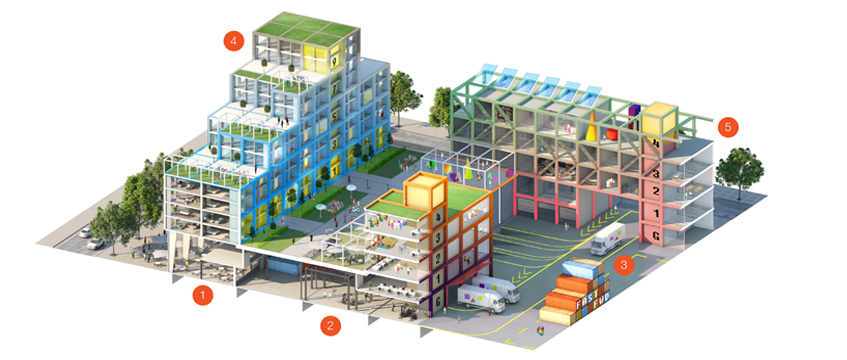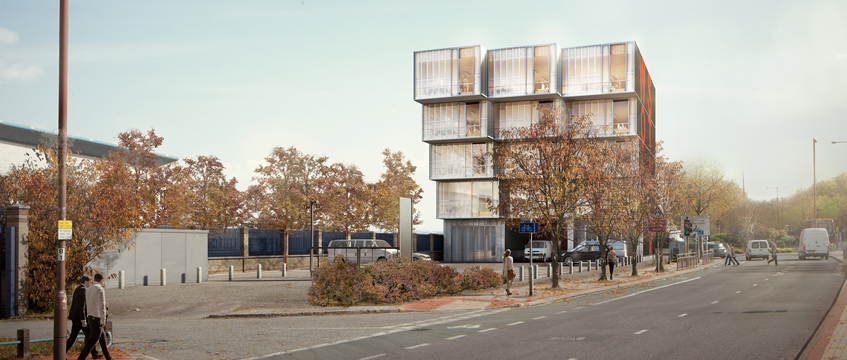It’s a challenge all urban areas are facing: increasing demand from competing usages for a diminishing supply of land.
Space for industrial use, anything from urban logistics to trade counter, workshops and wholesale markets, has fallen victim to housing demand and other higher-value “cleaner” and more socially acceptable land uses.
But there is a growing recognition, particularly in London, that there needs to be space for industrial in urban areas, particularly to fulfil the growing demand for online shopping deliveries.
Combining industrial development with other uses such as residential, student accommodation, leisure and offices seems the obvious answer but there is work to be done to change the perception of noise and pollution among other things.
We explore some of the solutions being proposed.
Hawkins Brown – Fast forward

Darryl Chen, partner, Hawkins\Brown, says smaller scale projects are already being worked on, but his firm has drawn up plans for what it is calling the “Fast Forward Building”, which conceives mixed use on a bigger scale.
Noise and servicing are the big issues, he says: “Warehouse servicing, where vehicles go has to be separate so it can’t be seen or heard by residents. On our scheme they face in different directions. Trucks go in one direction, cars and pedestrians go in another direction.”
He states that positive perception is key, highlighting the benefits to the industrial occupiers of potentially having food and retail offer on the doorstep, but also to residents who may have access to rooftop gardens or amenity space.
Stephen George & Partners – Co-location

James Nicholls, managing partner at Stephen George & Partners, says the rise in numbers of electric and hybrid vehicle will help the cause of co-locating urban logistics alongside residential and other commercial uses as it will help to mitigate the noise and pollution issues.
However, he says the success will need to be proved by starting with uses such as offices, PRS, student accommodation and budget hotels before private residential is to be a more viable option.
Multi-level mixed use could work with the right combination.
dRMM – Avoiding repetition

Patrick Usborne, associate, dRMM, says it is working on a beds and sheds scheme in the industrial heartlands of Hackney Wick and Fish Island, which includes 175 residential apartments wrapped around a proposed ground floor of light industrial and retail units.
“A mezzanine was added to a number of the industrial units to create flexibility and variety of space, and to help animate what would traditionally be a repetitive streetscape.”
To send feedback, e-mail stacey.meadwell@egi.co.uk or tweet @EGStaceyM or @estatesgazette










